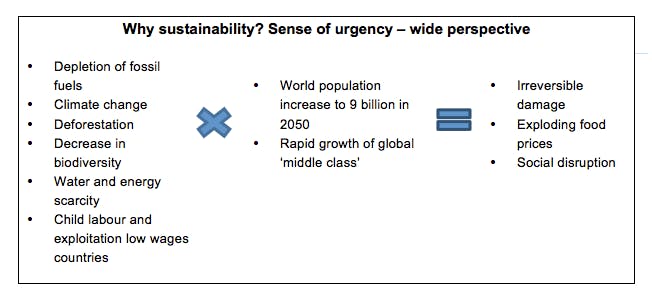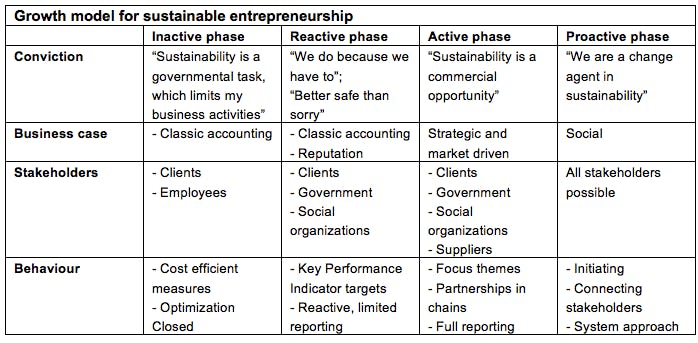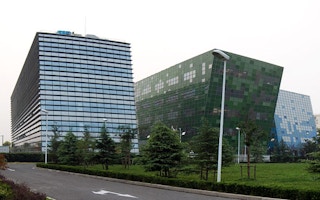Sustainability has been the talk of the town in recent years. We all have come to realise that if we want to leave this world to the following generations, we should drastically change our way of living. The image below illustrates this sense of urgency.
To continue reading, subscribe to Eco‑Business.
There's something for everyone. We offer a range of subscription plans.
- Access our stories and receive our Insights Weekly newsletter with the free EB Member plan.
- Unlock unlimited access to our content and archive with EB Circle.
- Publish your content with EB Premium.

Consequently, sustainable buildings have become the new trend. But when euphoria about formulated sky-high ambitions start to fade, and implementation appears to mismatch budgets, reverting to the business as usual appears to be the logical step. However, there is a way to avert such, that is, when we set sustainability goals that suit the identity of our organisation. This is how we establish our environmental principles and start doing the things that match our economic reality.
But how does that work? When talking about sustainability, people usually only consider energy and water consumption, waste and pollution. However, sustainability is much more than that. Therefore one should always consider sustainability in a wider perspective: people, planet and profit – all three of these are equally important:
- People
- Health and safety
- Staff involvement
- Human rights
- Planet
- Energy
- Waste
- Pollution
- Water
- Profit
- Financial results
- Social investments
This broader perspective already gives companies more possibilities to do sustainable business in their own way. For instance, when working with clients at Royal HaskoningDHV (RHDHV), an international engineering consultancy specialising in asset management, buildings, and energy, among others, we usually lead our clients through the following steps to help them define their required sustainability approach:
- Focus on values or themes that are important to your organisation. For example, ask whether a green building certification is applicable.
- Obtain endorsement of ambitions or initiatives supported by high level management.
- Develop and implement a sustainability programme.
- Monitor the programme.
- Conduct sustainability reporting (to tell the story to internal and external stakeholders).
Meanwhile, the table below helps companies to classify where they are right now in terms of sustainable entrepreneurship or corporate social responsibility and where they would like to be in a couple of years.

Case study: corporate campus goes green
One of the companies we helped with setting their sustainability goals was DSM, a global science-based company active in health, nutrition and materials. DSM assigned RHDHV for the design, project management and sustainability consultancy services of their new campus project located in Shanghai, China. The campus contains 26,000 square metres of floor area and accommodates around 600 people. The project was initiated in 2006 and completed in 2009.
During this time, DSM had already taken its first steps in implementing sustainability within its organisation with their Vision 2010 program, an initiative to reduce their global ecological footprint. RHDHV helped DSM translate this vision through this campus project, which was applied for an LEED Gold certification, an internationally acknowledged rating system for sustainable buildings. The DSM Campus was duly awarded in May 2009, and became one of the first LEED certified buildings in Asia.
Through the certification, DSM achieved the following key results:
- 100% score in water efficiency
- 80% score in Indoor Environmental Quality (IEQ)
- Energy efficiency of 25%, compared to baseline
- Incremental cost of approximately 30%
- OPEX benefits: yearly savings of $ 130,000
- Ecological footprint benefit: 400 tonnes of annual CO2 reduction
- Contributes to being an ‘employer of choice’
Of course, sustainability does not stop after construction is completed. In recent years, DSM has grown more dedicated to its sustainability and even took a worldwide sustainability leader position in the Dow Jones Sustainability Index.
On the China campus, DSM is still working to make the building more sustainable and ensuring it fits well with users’ needs. Here are some examples of assessments and planned improvements:
- Energy efficiency is on-going, including a step towards installing LED lighting
- The landlord downgraded the building management system, which poses a problem with the company’s sustainability requirements
- Waterless toilets were quite uncommon, but these work well in practice
- Grey water system or the rainwater harvesting system that provides water for toilet flushing was abandoned since users found it led to odour issues
The DSM China campus shows that sustainability beliefs can be applied to specific projects, for instance, by making use of green building certifications such as LEED. The result is a water- and energy-efficient building that creates a healthy and enticing environment for its users. Still, even after the delivery of the new building and the awarding of the LEED certificate, the job is not yet done. Buildings, just like sustainability, are on-going processes in which there are always room for new insights and innovative ideas.
Ilse Van de Voort, a sustainability consultant at Royal HaskoningDHV, recently presented at the CoreNet Global Asia Pacific Summit 2014 in Singapore.










